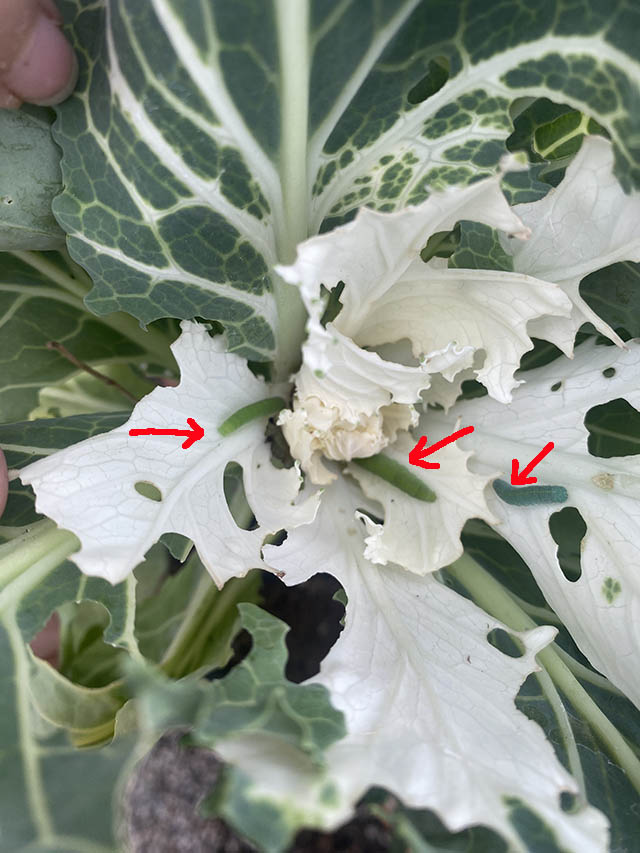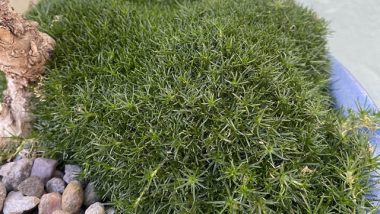Last updated on November 17th, 2024 at 12:44 pm
Green Caterpillars eating Winter Vegetables
Are caterpillars eating your winter vegetables? Winter gardening offers a real sense of accomplishment when you see those hardy vegetables thriving despite the cold. Yet, this serene image can quickly unravel with the appearance of green caterpillars. These small creatures can pose a significant threat to your winter crops, munching away at leaves and causing potential damage. But don’t fret. With some knowledge and preparation, you can protect your garden from these tiny invaders.
Identifying Green Caterpillars
What’s eating my winter vegetables? Knowing your enemy is half the battle, right? Green caterpillars might look similar at first glance, but not all are the same. Recognizing the specific type invading your garden is crucial for effective control.
Types of Green Caterpillars
Green caterpillars are fascinating creatures, often found munching on leaves. They’re not only interesting to observe but pivotal for many ecosystems. Here’s a comprehensive look at some of the most common types:
- Cabbage Worm
- Appearance: Bright green with thin, yellow stripes.
- Hosts: Common on cabbage, broccoli, and other crucifers.
- Fact: They transform into the Small White Butterfly.
- Tomato Hornworm
- Description: Large, vibrant green with white V-shaped markings.
- Diet: Feeds on tomato, pepper, and eggplant leaves.
- Unique Trait: Sports a black “horn” on its rear.
- Little Green Caterpillar
- Size: Typically very small, around 0.5 inches.
- Behavior: Known for rolling up in leaves for protection.
- Larvae Host: Oaks and various hardwoods.
- Lo Moth Caterpillar
- Features: Vibrant green with clusters of spiny bristles.
- Warning: Irritating spines can cause a sting-like sensation.
- Adult: Transforms into a striking Io Moth.
- Luna Moth Caterpillar
- Coloration: Light green with faint yellow lines and reddish spots.
- Habitat: Predominantly found on walnut, hickory, and sweet gum trees.
- Metamorphosis: Grows into the majestic Luna Moth.
- Spicebush Swallowtail Caterpillar
- Distinguishing Feature: Enlarged front segments resembling a snake’s head.
- Leaf Hosts: Prefers spicebush and sassafras.
- Defense Mechanism: Mimics a snake to deter predators.
- Green Cloverworm
- Activity: Active indoors and outdoors, feasting on a variety of plants.
- Key Feature: Slim, with faint white stripes along its body.
- Encouraging Fact: Helps control levels of certain plants.
- Oakworm
- Diet: Specializes in oak leaves.
- Indicator: Early defoliation can signal their presence.
- Transformation: Becomes the colorful Oakworm Moth.
- Zebra Caterpillar
- Looks: Green with striking black and white stripes.
- Choice Foods: Consumes a wide range of herbaceous plants.
- Survival Tactic: Camouflages well among leaves and shadows.
- Winter Moth Caterpillar
- Seasonality: Emerges in late winter, a rarity among caterpillars.
- Preferred Plants: Feeds on fruit and ornamentals.https://guzmansgreenhouse.com/vegetable-gardening-tips/
Cautionary Note: Can cause significant damage to host plants.
You can see images of some green caterpillars here – Green Caterpilars images.
Signs of Infestation
Wondering if those holes in the leaves are simply weather-related damage or something more sinister? Look closely. Tiny, irregularly shaped holes, leaf skeletonizing, and dark, pellet-like droppings (frass) on plants are telltale signs of caterpillar activity. Keep an eye out for chewed edges and missing leaves, too. Catching these signs early can save your crops from further harm.

Impact of Green Caterpillars on Winter Vegetables
Green caterpillars are not just harmless eaters; they can cause serious disruptions in your garden. Their presence often spells trouble, reducing both yield and quality.
Types of Damage Caused
These pests mainly feast on leaves, leaving unsightly holes and, in severe cases, stripping plants bare. This not only affects the plant’s ability to photosynthesize but also weakens its overall health. Consequently, you might see stunted growth and potential crop loss, especially if the infestation is left unchecked.

Affected Vegetables
Some vegetables are more vulnerable than others. Kale, for instance, with its dense, leafy structure, becomes a favorite caterpillar buffet. Broccoli, collard greens, and cabbage are also often targeted, having their leaves and, in worst cases, their buds and stems attacked. Regular checks are essential to keep these crops healthy.
Control Methods for Green Caterpillars
Take control of the situation with strategic actions to manage and reduce caterpillar populations in your garden. The best way to remove these garden pests is to remove them by hand or use tweezers, 100 percent organic. However, this is easy of you have a small garden for larger garden continue reading below.
Cultural Controls
Start with crop rotation. Moving your vegetables to different beds can disrupt caterpillar life cycles. Intercropping with pest-repelling plants like thyme or dill can also deter caterpillars. Keeping your soil rich and healthy through composting strengthens plants, making them less susceptible to infestations.
Biological Controls
Go organic by using natural predators. Beneficial insects such as ladybugs, lacewings, and parasitic wasps can help curb caterpillar numbers. Encouraging birds in your garden through feeders or baths can also provide natural pest control.
Chemical Controls
When cultural and biological methods fall short, consider eco-friendly pesticides. Neem oil and Bacillus thuringiensis (Bt) are safe options for organic gardens. Apply these solutions according to instructions, and always aim for minimal intervention to maintain ecosystem balance.
Preventing Future Infestations
Prevention is always better than cure. Taking a few preventive measures now can save your winter vegetables from caterpillars later.
Preventive Measures
Row covers can serve as physical barriers, keeping caterpillars away from your tender greens. Regular inspections—both visual and tactile—are essential. Maintain garden hygiene by promptly removing debris and weeds, which can harbor these pests.
Seasonal Considerations
Understanding seasonal patterns helps you anticipate caterpillar activity. Caterpillars tend to be more active during certain times, so staying informed about local pest forecasts can aid in preparation. Adjusting planting schedules slightly can also mitigate caterpillar damage.
Vegetable Gardening Tips during growing season.
Conclusion
Green caterpillars might pose a challenge to winter gardening, but with the right approach, they can be managed effectively. Identifying these pests early, understanding their impact, and implementing thoughtful control measures are key. By staying vigilant and proactive, you ensure your winter vegetables not only survive but thrive. Remember, a well-maintained garden is a resilient one. So, gear up and protect your greens for a bountiful harvest!
Caterpillars eating winter vegetables

Greenhouse Manager, Master Gardener, and Webmaster.
If you have any questions or enjoyed this post, feel free to share your thoughts in the comments below.


